Tanchjim Darling miniHype
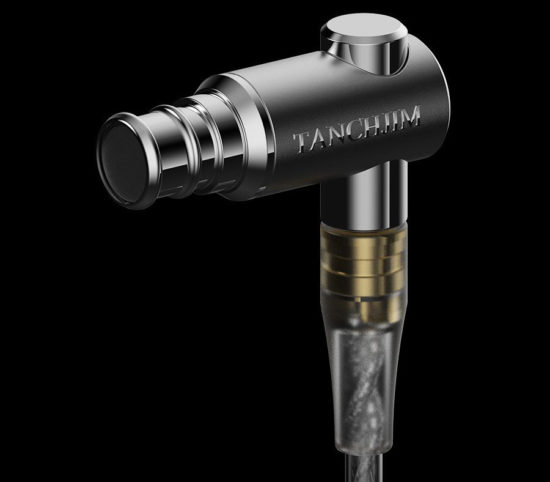
Rarely do we find a headphone that ticks almost all the boxes. The Tanchjim Darling is an unusual breed of IEM that has hardly any flaws, and doesn’t even come with that large of a sticker price.
The Darling is a small, but beautiful-looking IEM, with a cable that reminds us of the much more expensive Final Audio A8000. With very small housings, the Tanchjim Darling’s design should make it straightforward to obtain a proper fit and seal, regardless of ear size or shape.
The Darling is a hybrid IEM with a single dynamic driver and two balanced-armature drivers. The BA drivers sit forward in the shell, firing directly down the nozzle, which likely contribute to its excellent treble extension. While dynamic driver (and dynamic-driver hybrid) designs usually rely on external vent ports for tuning, the Darling doesn’t. The result is a fantastic (Etymotic-like) level of external noise isolation. Sound-stage width collapses slightly as a result, but the answer to this is binaural recordings or software corrections using approximate or tailored head-related transfer functions. We do not consider it a fault of any headphone if users choose to play back music recorded for speakers via in-ear monitors. This is why we don’t tend to comment much on sound-stage – because this is fundamentally a feature, issue, or problem of the source recording.
The Darling is relatively easy to drive and fairly insensitive to source output impedance. It’s still worth noting that increasing source output impedance does tend to increase the treble peaks, so we recommend a good source with a z-out of 1 Ohm or less. We also strongly recommend the use of foam eartips, as these also help tame the treble. (Foam tips need to be purchased separately, as the Darling only comes with a selection of silicone tips.) We found the best-sounding eartips for these to be the small-size Comply Comfort 500 tips. The Darling has notches on its nozzles to allow shallower or deeper insertion. We preferred the shallower-insertion option, which still isolates equally well:
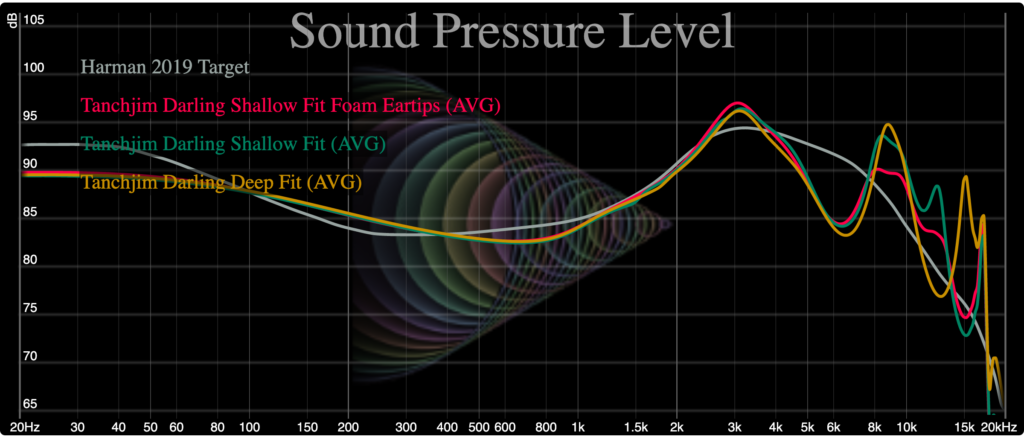
So how does the Darling compare against the very best headphones out there?
The KSE1500 is probably the most resolving IEM you can currently buy. In theory, that comes at the price of some shift in timbre, as it moves much of the mid-range energy into the ~10 kHz region. However, the KSE1500 still sounds perfectly natural to us. Its main issue is really just portability as it requires a dedicated electrostatic amp, and many in the community have been hunting for a KSE1500-equivalent that doesn’t require such an amp.
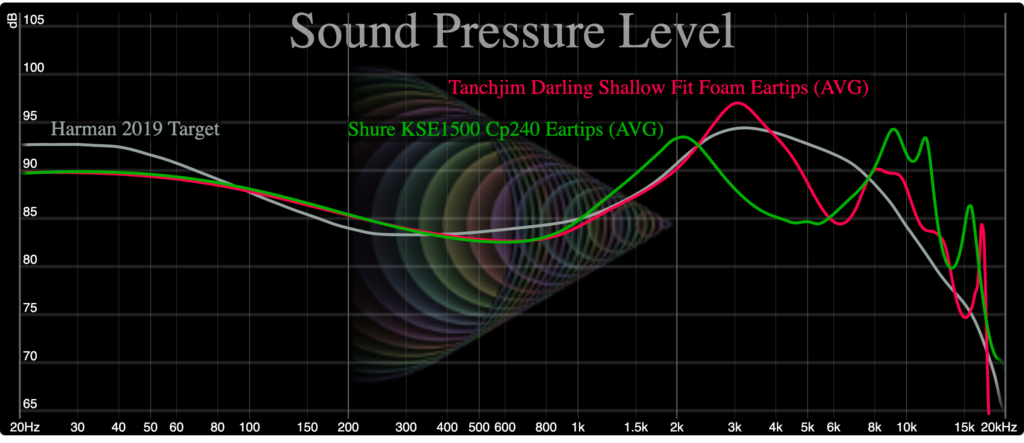
Our favorite eartips for the KSE1500 are the double-flange SpinFit Cp240 tips. They’re not the world’s most comfortable eartips, but they help to tame the treble. Even with these eartips, the KSE1500 still has a lot of energy in the ~10 kHz region. With a low output source impedance and foam eartips, it’s honestly difficult to say that you’re missing anything with the Darling. In fact, the Darling is closer to the Harman target and so ought to (theoretically) have a wider appeal than the KSE1500.
The older Shure SE846 is still a popular IEM, and for good reason. It is still one of the best-sounding (and best-scoring) IEMs you can buy. Comparisons below use the combination of white filters with Cp240 eartips:
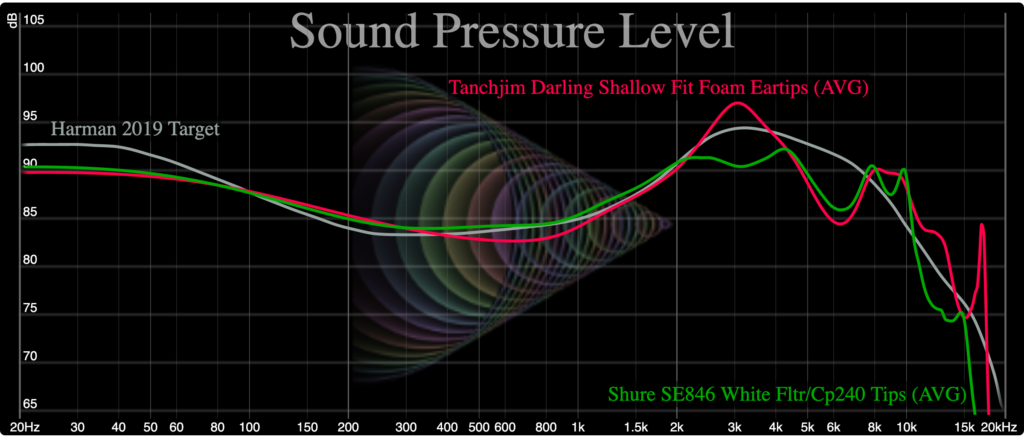
The Darling drifts slightly over the Harman target around 3 kHz, while the SE846 is a little under in that region. The Darling has better treble extension, which has long been noted as a bit of a weakness of the SE846.
A good contender for best-sounding IEM is the FiR Audio M5. The M5 does a very good job of following the Harman target in the treble and is a very natural-sounding IEM. It is, however, rather sensitive to the source and can quickly start sounding muddy with higher output-impedances. It tends to be just fractionally heavy in the mid-bass:
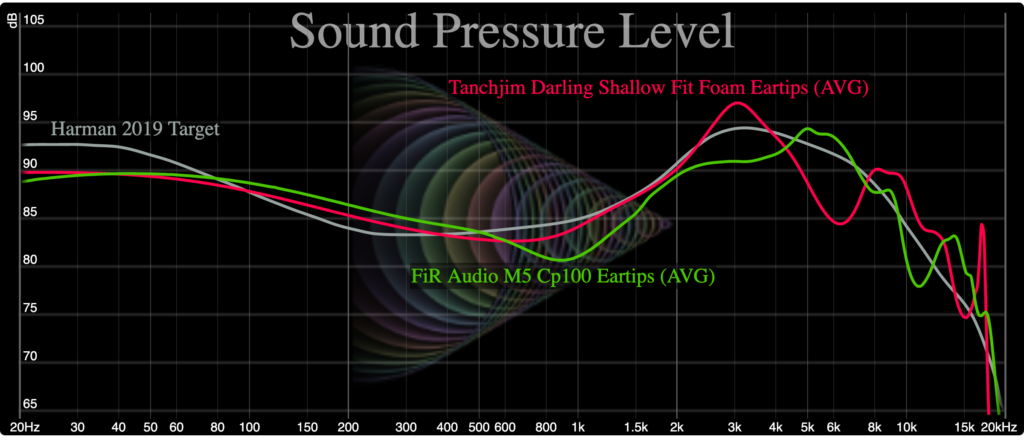
Another fantastic earphone is the Final Audio A8000. This is a single dynamic driver IEM that leans a little bit bright with silicone tips, but sounds very good with foam tips. The cables on the Darling and A8000 are rather similar – both shiny silver with a transparent 3.5 mm plug on the A8000 and transparent mmcx connectors on the Darling.
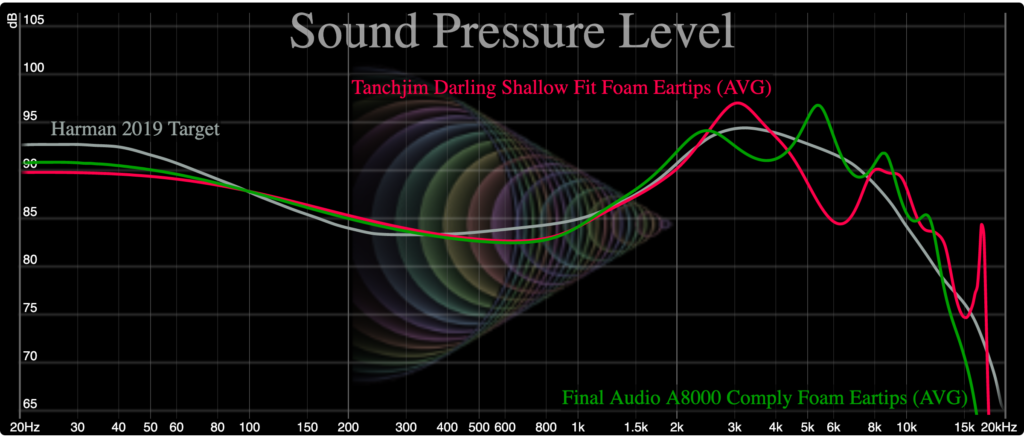
Summary
If you’d like to see the Darling compared with other high-quality IEMs, or to examine the effects of eartips or output impedance, etc., go crazy with the graphtool below…
—————————————————
Did You Know?
All products on our databases come with a ‘microHype’ – brief subjective thoughts and impressions on the product and its ranking. To access the DAP microHypes, simply click on the slide for that DAP. To access the microHype for a headphone, click on the name of the heaphone once displayed, or click on the (red) score in any rank/search result. Certain products that are regarded as special, or particularly relevant or interesting, have more extensive reviews in the form of ‘miniHypes’. The latest miniHype is always displayed on HypetheSonic’s front page, with archived miniHypes shown below.
